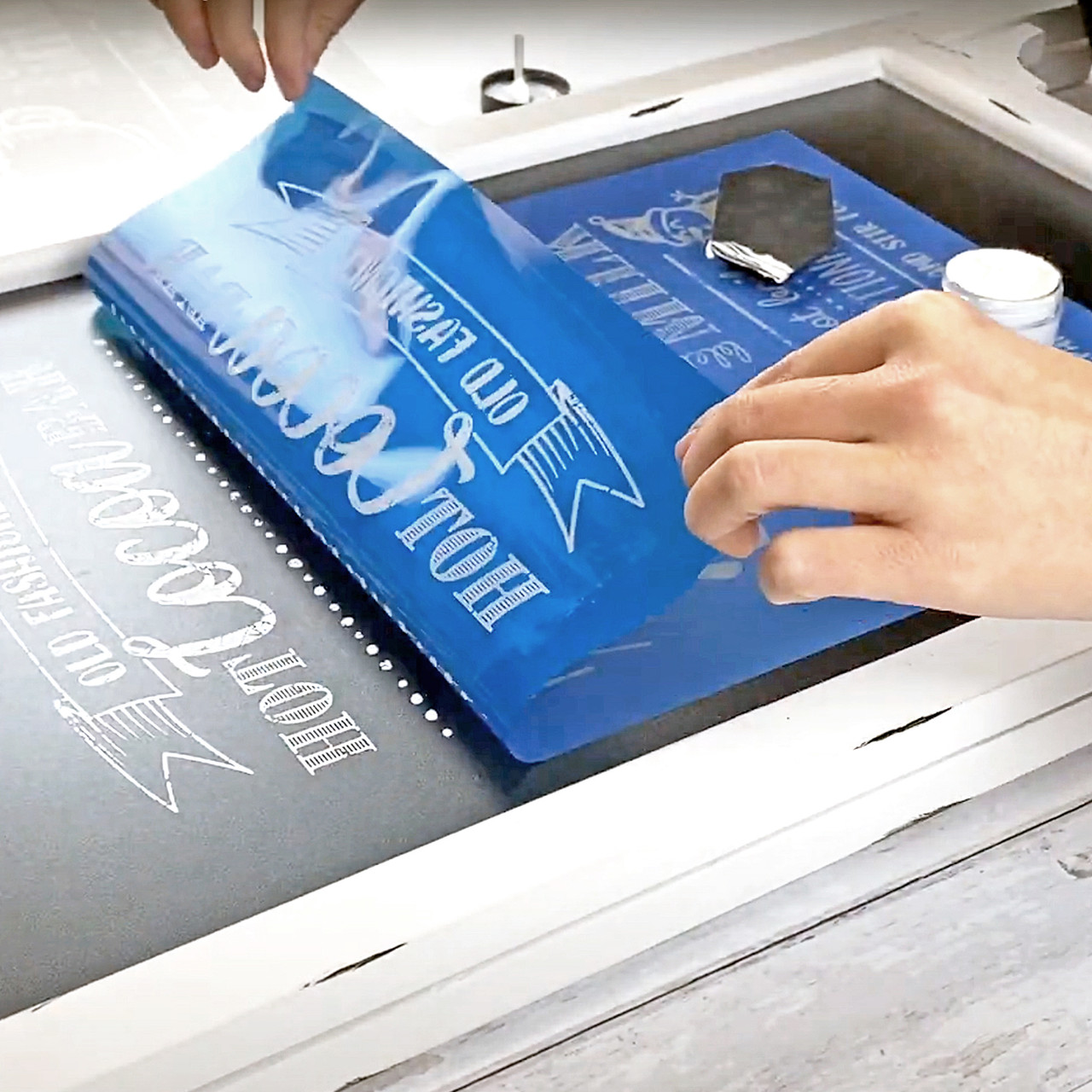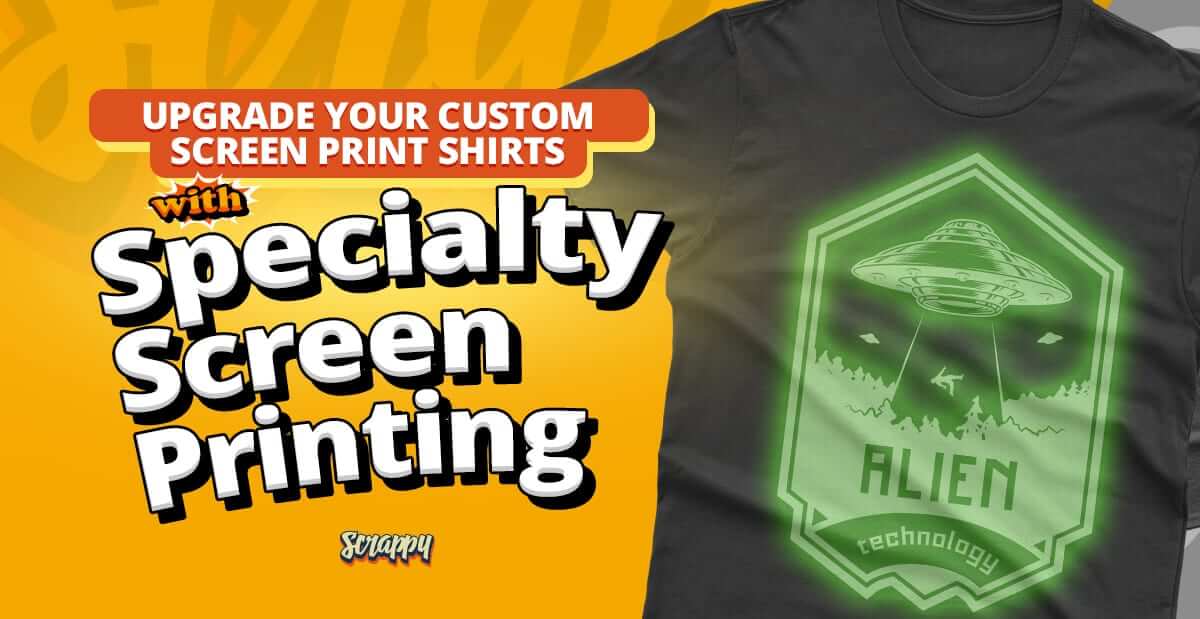Fast Turnaround Custom Screen Printing for Events
Fast Turnaround Custom Screen Printing for Events
Blog Article
Display Printing Uncovered: Whatever You Required to Understand About Tee Shirt and Garment Printing Techniques
Display printing is an interesting technique that combines art with strategy, supplying countless opportunities for creativity. Ready to explore the important elements that make screen publishing an art type?
The Essentials of Screen Printing: Exactly How It Functions
When you plunge into display printing, you'll find it's both an art and a scientific research. At its core, screen printing includes developing a stencil, or screen, that permits ink to pass via only in specific locations.
Setting the screen over the material, then use a squeegee to push ink with the screen onto the garment. Each step is important, and grasping them will certainly elevate your screen printing skills, changing straightforward garments into distinct, meaningful items.
Types of Display Printing Techniques
When you grasp the fundamentals of screen printing, it's time to check out the different techniques that can boost your designs. One popular approach is standard display printing, where ink is pressed with a stenciled screen. This method is great for strong, lively shades. There's water-based ink printing, which supplies a softer feeling and is environmentally friendly, yet it calls for a different technique to curing.
If you're going for great information, think about discharge printing. This strategy removes color from the material, leaving a soft, classic appearance. One more alternative is plastisol printing, recognized for its durability and dazzling shades, making it a preferred for many brands. Lastly, explore halftone printing to develop gradient effects and detailed styles. Each method has its special charm, so don't wait to attempt them out to locate what suits your design best!
Important Tools for Screen Printing
To achieve sensational lead to display printing, having the ideal equipment is essential. You'll require a sturdy screen printing structure, which holds the mesh that transfers your style onto the garment. Next off, buy high-grade squeegees; these are necessary for applying ink uniformly across the display. You'll also require an excellent exposure unit to produce your displays, along with a washout booth for cleaning them after use. A trusted heat source, like a conveyor clothes dryer or warmth press, is vital for healing your prints to guarantee long life. Don't fail to remember a correct workspace, equipped with tables and storage space for your materials. Ultimately, safety equipment, such as masks and gloves, will keep you safe from chemicals and inks. With the right tools, you'll be well on your method to creating professional-quality prints.
Choosing the Right Inks and Materials
When choosing inks and materials for display printing, you require to think about the kind of ink that functions best for your job. Assume about fabric compatibility to guarantee your styles look excellent and last lengthy. Explore eco-friendly ink alternatives to make your printing procedure much more sustainable.
Kinds Of Display Inks
Picking the appropriate display ink is essential for accomplishing vivid, durable prints that satisfy your job's needs. There are numerous types of screen inks to take a look at. Plastisol ink is prominent for its versatility and convenience of usage, supplying outstanding shade opacity on dark fabrics. Water-based ink, on the other hand, supplies a softer feeling and is green, making it perfect for those wanting to minimize their ecological impact. Release inks remove color from the textile, leading to a soft, vintage look yet need details handling. Specialized inks, such as glow-in-the-dark or metal, can include distinct results to your designs. Examine your task demands and select the ink that lines up ideal with your preferred outcome.

Textile Compatibility Factors To Consider
Recognizing material compatibility is crucial for accomplishing top notch display prints, particularly because different materials respond distinctly to different inks. When selecting inks, consider the fabric kind-- cotton, polyester, or blends. For cotton, water-based inks function well, using gentleness and breathability. Polyester, on the other hand, typically needs plastisol inks for better adhesion and vivid shades. You may need to utilize a combination of both kinds if you're printing on blends. Always examine your inks on example material to guarantee they stick effectively and preserve color honesty. Furthermore, bear in mind that fabric weight and appearance can impact the final result, so selecting the appropriate ink and material combination is crucial for your project's success.
Eco-Friendly Ink Options
Environmentally friendly inks are coming to be a popular choice for screen printers who want to minimize their environmental impact while maintaining quality. When selecting inks, consider water-based inks, which are less damaging and simpler to clean up compared to conventional solvents.
Furthermore, search for inks made from renewable energies, such as soy or vegetable-based choices. By choosing the right inks and materials, you'll not just develop magnificent styles however also add to a more sustainable printing process. Make the switch, and your prints will certainly mirror your dedication to the atmosphere!
Preparing Your Style for Screen Printing

File Style Demands
To ensure your design looks lively and sharp on textile, you'll need to pay close interest to file layout requirements for screen printing. Start with vector documents like AI or EPS, as they can be scaled without shedding high quality. If you utilize raster photos, select high-resolution documents, such as TIFF or PNG, preferably at 300 DPI. Prevent making use of JPEGs, as they can shed clarity when resized. Make sure your design has a clear background to protect against undesirable white edges on your prints. Finally, keep shade modes in mind; CMYK is typical for screen visit their website printing, so convert your RGB creates accordingly. By adhering to these standards, you'll set your art work up for a successful print.
Color Splitting Up Techniques
Color separation is an essential action in preparing your layout for screen printing, and mastering it can substantially improve your print top quality. You'll require to damage your style into specific colors, as each shade calls for a separate display during printing. Beginning by recognizing all the colors in your style and produce layers for each one. You can use software application like Adobe Photoshop or Illustrator to isolate and separate colors successfully. Be specific to save each layer as a separate documents, commonly in a style like TIFF or PSD. This precision not just assures accurate color depiction but additionally enhances the printing process. By paying attention to color separation, you'll attain lively and specialist cause your screen-printed garments.
Resolution and Size
Accomplishing the ideal results in screen printing starts with assuring your design has the right resolution and size. Preferably, your artwork should go to the very least 300 DPI (dots per inch) for sharp, clear prints. If you make use of lower resolution, your end product might look pixelated and unprofessional.
When it involves size, consider the measurements of your print location. Layout your art work to match the last print dimension, ideally developing it in the real dimensions you'll be publishing. In this manner, you'll prevent any type of unanticipated scaling problems.
Always examine your design in both vector and raster styles. Vector graphics can be scaled without shedding top quality, making them perfect for display printing. Preparing appropriately will guarantee your design looks remarkable on every garment!
Step-by-Step Screen Printing Process
Screen printing is a vibrant procedure that enables you to create lively layouts on different surfaces. To obtain begun, you'll require a screen, emulsion, and your picked ink. Initially, prepare your display by cleansing it completely. Next off, use the emulsion evenly and let it completely dry in a dark location. Once dry, expose your display to light with your layout put on it, which will certainly set the emulsion where the light hits, developing a pattern - screen printing kit.
Pour ink onto the screen and utilize a squeegee to push the ink with the stencil onto the fabric. Lift the screen meticulously and let the print dry. You've Home Page efficiently display printed your design.
Tips for Successful Display Printing Projects
While you're diving into your screen printing jobs, keep in mind that prep work is key to success. Begin by collecting all your products-- inks, mops, garments, and displays. A tidy office aids stop unwanted errors, so clean prior to you begin.
Next, confirm your artwork is high-resolution and appropriately sized for your garment. Test your screen for correct exposure and clean it thoroughly to avoid smudges. When mixing your inks, adhere to the maker's guidelines to achieve the ideal uniformity.
Throughout printing, apply also pressure with your squeegee for consistent results. Don't rush; take your time to verify each print meets your standards. After printing, allow your garments completely dry completely prior to handling or packaging them.
Finally, constantly keep a sample of your work for future referral. By doing this, you can evaluate your development and enhance your methods over time. Delighted printing!

Often Asked Inquiries
How much time Does It Require To Establish a Screen Printing Job?
Establishing up a display printing task normally takes around half an hour to an hour. You'll prepare the displays, mix inks, and change the press. The moment varies based upon complexity and experience, so stay arranged!
Can I Print on Various Material Types Utilizing the Exact Same Strategy?
Yes, you can publish on various fabric kinds making use of the same strategy, however you'll need to readjust your settings and inks. Some textiles soak up ink in a different way, so trying out guarantees the very best results for every material.
What Are Common Mistakes to Prevent in Screen Printing?
When display printing, stay clear of typical errors like making use of the incorrect ink, ignoring appropriate direct exposure times, or skipping pre-press checks. Constantly check your configuration and keep clean screens to guarantee quality results each time.
Exactly How Can I Effectively Tidy and Keep My Display Printing Devices?
To properly clean and preserve your screen printing equipment, you must consistently wash displays with appropriate solvents, inspect mops for wear, and ensure all tools are stored dust-free and dry. Consistency improves and protects against pricey repair services performance.
Is Screen Printing Eco-friendly Contrasted to Various Other Techniques?
Display printing can be more environmentally friendly than various other methods, especially if you utilize eco-conscious products and water-based inks. By picking sustainable supplies and techniques, you reduce waste and reduce your effect on the earth.
Display Printing Uncovered: Everything You Need to Know Regarding T-Shirt and Garment Printing Strategies
At its core, display printing involves developing a stencil, or display, that enables ink to pass with only in particular areas. Setting the screen over the material, after that use a squeegee to push ink via the screen onto the garment. One prominent technique is typical display printing, where ink is pushed via a stenciled screen.When picking inks and materials for screen printing, you require to take right into account the kind of ink that works finest for your job.
Report this page